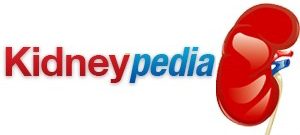Renal colic refers to abdominal pain. It’s moderate to severe in intensity. Normally it’s a symptom of kidney stones or renal calculi. It’s a moving, circulating pain that starts in the abdomen and moves from the abdomen to the groin and back. It varies in intensity. Sometimes renal colic is a dull pain, sometimes sharp. At its worst, renal colic –
intense forms of pain ever suffered by the human body, worse than burns, gunshot wounds, broken bones, or the pain of childbirth. The pain sometimes comes in waves and is sometimes constant. The location of the strongest pain may be in the kidney area or the bladder area or both, usually depending on where exactly the obstruction caused by the kidney stone is found.
Causes And Risk Factors
Renal colic, a symptom of kidney stones, is of course caused by kidney stones; the real question is not what causes renal colic but what causes kidney stones themselves. Renal calculi may have multiple sources. They can be caused by urinary tract infections, diseases of the small intestine, gout, excess calcium, inflammatory bowel disease, excess uric acid in the urine, and dehydration, among other things.
Dietary factors increasing the danger of kidney stones include excessive meat intake and excessive intake of other protein-
Treatment
Renal colic always indicates that a kidney stone requires at least a minimal level of treatment. Kidney stones can occur without any noticeable symptoms at all, but obviously if someone is suffering from renal colic that isn’t what’s happening. Treatment of the pain itself is indicated using pain medications –
That’s all that’s required for the smaller kidney stones, but for larger ones more may be necessary. If the kidney stone is large enough that it can’t pass the system without intervention, more aggressive treatment becomes a requirement. Stones less than four millimeters in diameter should normally pass without difficulty. Stones larger than that reduce the chances of successful natural elimination, and for stones eight millimeters in diameter or larger, surgical intervention is almost always required.
What kind of surgical intervention to use again depends on the size of the stone and secondarily on its location. The least aggressive treatment beyond pain medication and monitoring is lithotripsy, which uses either pulsed ultrasound bursts or laser light to break up the kidney stone into smaller stones that can pass naturally.
Ultrasound lithotripsy involves the use of pulsed sound waves. The patient reclines on a table with a liquid-
Laser lithotripsy is slightly more invasive, inserting a scope into the body to find the kidney stone, feeding a fiber optic cable down the length of the scope, and using this to direct laser light pulses to break up the kidney stone. This has a somewhat higher chance of success than ultrasound lithotripsy, but is more invasive and so a less desirable option when ultrasound lithotripsy is believed to have a good chance of breaking up the kidney stone.
More intrusive forms of surgery may be required when the kidney stone is too large to treat with lithotripsy. Laporoscopic surgery can often be used to physically break up the stone, or in extreme cases conventional open surgery can be used to physically remove the kidney stone from the body. This last method is highly invasive, must be done in a hospital setting, and requires a long recovery time compared to other treatment methods.
Prevention
In addition to direct treatment of the kidney stones, lifestyle changes may be indicated or desirable to make recurrence less likely. Basically this involves reversal of whatever dietary or other lifestyle factors are believed to have contributed as causes to the kidney stones: increased water consumption, reduced meat eating, reduced calcium consumptions, discontinuance of certain medications or dietary supplements, and so on.
Where infectious diseases are at fault, treatments may include antibiotics or antiviral drugs, or hospitalization to monitor recovery from the infection. Some medications can be used to treat kidney stones themselves by treating the concentration of certain substances in the urine that can lead to kidney stones, particularly urine pH (acid/alkali) level.
